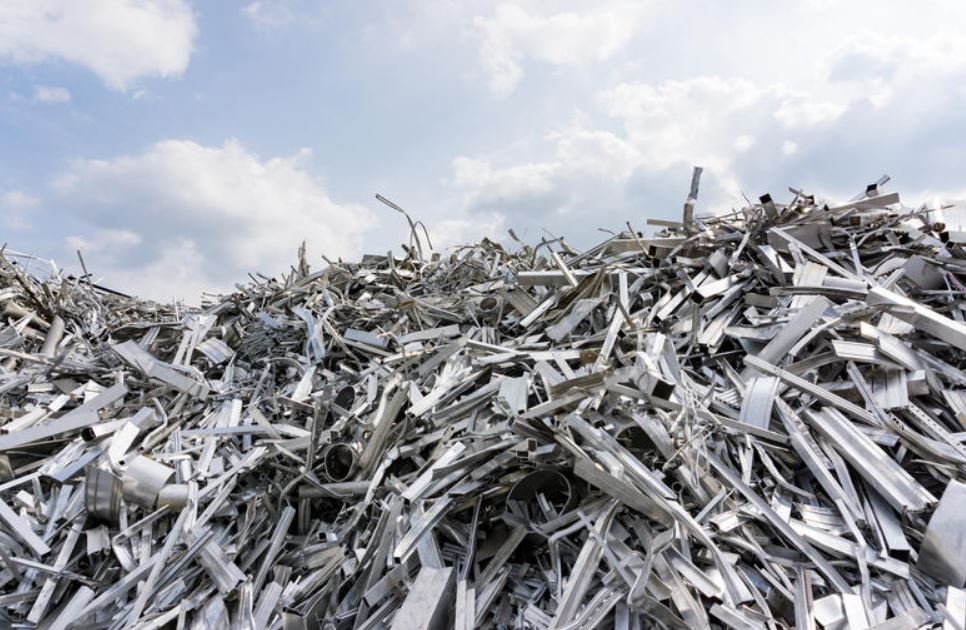Today, aluminium is a widely used metal in various industries. The metal is lightweight, easy to process, and corrosion-resistant. Aluminium consumption is growing year by year. It is facilitated by the development of aluminium production technologies and the expansion of its scope.

Aluminium is one of the most abundant elements in the Earth's crust. Despite the fact that the world's primary aluminium production has impressive rates, today recycled scrap remains the major source of the total aluminium production. The value of recycled aluminium is much lower than primary aluminum. Besides, production of secondary aluminium is less energy-intensive and more environmentally friendly. Aluminium scrap plays a crucial role in saving natural resources. Aluminium scrap market with its leading players: China, the United States, the European Union, and India have a significant impact on the development of the world economy and production.
Worldwide secondary aluminum is produced twice as much as primary at present. According to the data of IAI Statistical Report [1], in 2017, the total volume of alumina production was 132,390 TMT, including 63,404 TMT of primary aluminium. In 2018 there were 130,433 TMT and 64,336 TMT respectively. Some countries produce four times more secondary aluminium than primary one. For example, in 2018, the US produced 890 TMT of primary aluminium and 3,700 TMT of secondary (new and old scrap) aluminium.
China continues to be the leader of aluminium production. It produces more than half of all aluminium in the world. In 2018, China manufactured 71,547 TMT of alumina in total, including 36,485 TMT of primary aluminium. Among the largest alumina producers in 2018, we can distinguish such areas as Oceania (Australia and New Zealand) - 20,365 TMT, South America - 9,991 TMT and Europe (including Russia) - 10,334 TMT [1].
It should be noted that the highest percentage of secondary aluminium is produced in Australia and New Zealand. In these countries, 90% of the total aluminium is manufactured from the scrap. In 2018, Australia and New Zealand produced only 1,917 TMT of primary aluminium [1].
Dr. Heinz-Jürgen Büchner, Managing Director Industrials & Automotive at IKB Deutsche Industriebank AG says that in the long run, the demand for aluminum will increase. According to him, in the next five years the expansion of primary aluminum production will be insignificant. At the same time, the expert predicts the increase of aluminum scrap recycling.
It is difficult to overestimate the importance of aluminium scrap market for the growing needs of the global aluminium production.
The more aluminium is consumed by a country for production of goods or purchase of aluminium-containing products, the more aluminium scrap and waste are obtained after their use. As usual, aluminium scrap and waste are recycled domestically or exported to other countries depending on the needs. Aluminium can be recycled to infinity. For various aluminium products, most often there is no difference in whether they are manufactured from primary aluminium or scrap. The product quality is the same or almost the same.
More than 90% of aluminium used in the construction and automotive industry is recycled. In addition, the lion's share of scrap is made up of aluminium cans. In developed countries, 70-90% of cans are processed. The worldwide processing of cans is 50%.
The countries where these industries are highly developed use domestic and imported scrap in large quantities. In turn, the countries that consume a large amount of aluminium-containing goods but have poorly developed the production of goods and lack of scrap processing plants export scrap.
In 2017, aluminium scrap is ranked 237 among the best-selling products in the world. As for the largest exporters and importers of aluminium scrap in the world indicated in https://trade-metal.com/metal-scrap-c511.html, we can see several countries in the top 5 of both importers and exporters. These countries sell and buy scrap depending on the conjuncture of the world and domestic markets, scrap quality characteristics, and their current requirements.
The total value of world exported and imported aluminium scrap in 2017 was $13.5 billion. The main exporting regions are Europe and Northern America. In 2017 the leading aluminium scrap exporting countries were:
Figure 1. Export value of aluminium scrap in leading countries in 2017, million $
As you can see, the first two places are occupied by the countries included in the top 5 world automobile manufacturers.
The main importing regions of the aluminium scrap market are Asia and Europe. In 2017, the leading aluminium scrap importing countries were:

Figure 2. Import value of aluminium scrap in leading countries in 2017, million $
Five largest scrap importers are also the leaders of the global automotive industry. It confirms the fact that automotive industry is the largest consumer and supplier of aluminium scrap today.
And now we can find out where the leading countries of aluminium scrap market export and import scrap.
In 2017, the United States exported almost half of its scrap to China (49%). In addition, South Korea (13%) and India (6.6%) were large consumers of scrap from the US.
Figure 3. Export of aluminium scrap from the United States in 2017, %
More than half of the total imported aluminium scrap in the United States was the scrap from Canada (57%). A quarter of imported scrap came from Mexico (25%). In turn, Canada exported 73% of scrap to the United States and 21% to China.
Figure 4. Import of aluminium scrap to the United States in 2017, %
Most of all, Germany exported scrap to such European countries as Austria (18%), Italy (14%) and Belgium-Luxembourg (13%), and imported from the Netherlands (19%) and Poland (17%) in 2017.
China imported scrap from the United States (35%), Hong Kong (16%), and Thailand (11%). As for the export, China recycles its own scrap and uses it inside the country.
In 2017, India bought scrap in Saudi Arabia (15%), the United Kingdom (13%), and the United Arab Emirates (11%). South Korea imported the most scrap from the USA (24), Japan (11%) and Thailand (10%).
Today, the United States exports twice as much scrap as it buys in other countries. The US exports scrap to the Asian countries and imports it from the countries in North America.
China imports most scrap in the world to close its production needs from the US and Asian countries, but at the same time, it practically does not sell scrap for export.
Germany exports one and a half times more scrap than it buys in other countries. The country sells and buys aluminium scrap within Europe.
Separately, we should mention various trade wars between the most significant players in the world economy. All sorts of quotas and high import duty rates have been applied regularly to the metal scrap market in recent years. For example, in 2018 the US estimated the 10% tariff of the import duty for aluminium. In response, China raised the duty rate to 25% on aluminium imports from the United States. After that, the US also set the 25% tariff on aluminium alloys and semi-finished products from China [4].
Aluminium official London Metal Exchange (LME) price for three months contract is $1821 per tonne for July 23, 2019 [3]. According to the Bureau of Labor Statistics (the US) https://www.bls.gov/regions/mid-atlantic/data/producerpriceindexmetals_us_table.htm the Producer Price Index for aluminium base scrap is 185.8 (May 2019.) It is the lowest figure for the last year and a half. In 2018, the rate ranged 191.9 - 239.1. Aluminium scrap market price depends on the type of aluminium scrap, its physical characteristics, and chemical composition.
Over the past five years, we could see the lowest LME prices for aluminium in November-December 2015 and January 2016 ($1468 - 1497 per tonne.) In 2017 and the first half of 2018, aluminium prices increased to 2,299 per tonne (May 2018). Starting from November 2018, the prices began to drop again. Aluminium scrap market rate went up and down simultaneously.
Since China is the main consumer of aluminium scrap, the scrap price and volumes depend on the further economic and industrial growth in this country and other developed and booming countries such as the US, India, Germany, and Canada.
Comparing the export and import figures of the global aluminium scrap market, we can trace the certain patterns. European countries, as well as the USA and Canada, which experienced the production growth of consumer goods and automobiles 20-30 years ago, have large aluminium and other scrap volumes today. At the same time, the Asian countries with their economic boom at present are the largest consumers of aluminium scrap.
1. Alumina production. The International Aluminium Institute. 2019. Accessed July 23, 2019 http://www.world-aluminium.org/statistics/alumina-production/.
2. Producer Price Index - Metals and metal products. U.S. Bureau of Labor Statistics. 2019. Accessed July 23, 2019 https://www.bls.gov/regions/mid-atlantic/data/producerpriceindexmetals_us_table.htm
3. LME Aluminium Official Prices. The London Metal Exchange. 2019. Accessed July 23, 2019. a href="https://www.lme.com/en-GB/Metals/Non-ferrous/Aluminium#tabIndex=0.
4. Aluminium 2019. Mineral Commodity Summaries. U.S. Geological Survey. 2019. Accessed July 23, 2019. https://www.usgs.gov/centers/nmic/mineral-commodity-summaries.